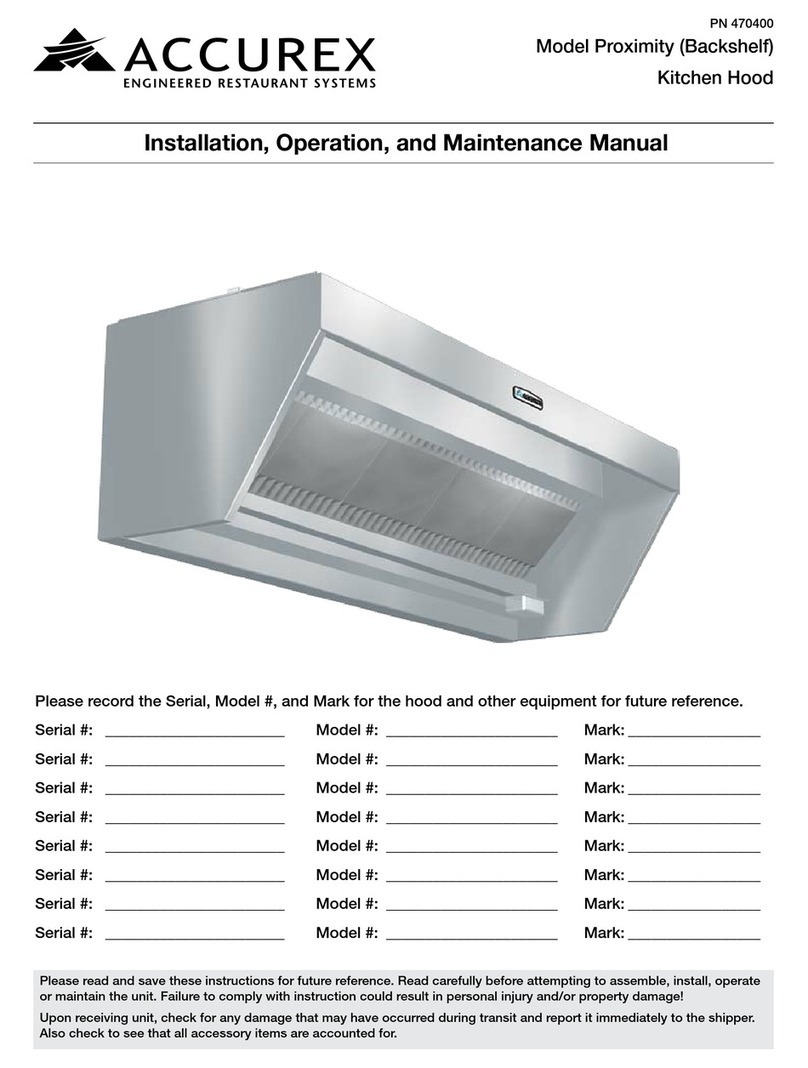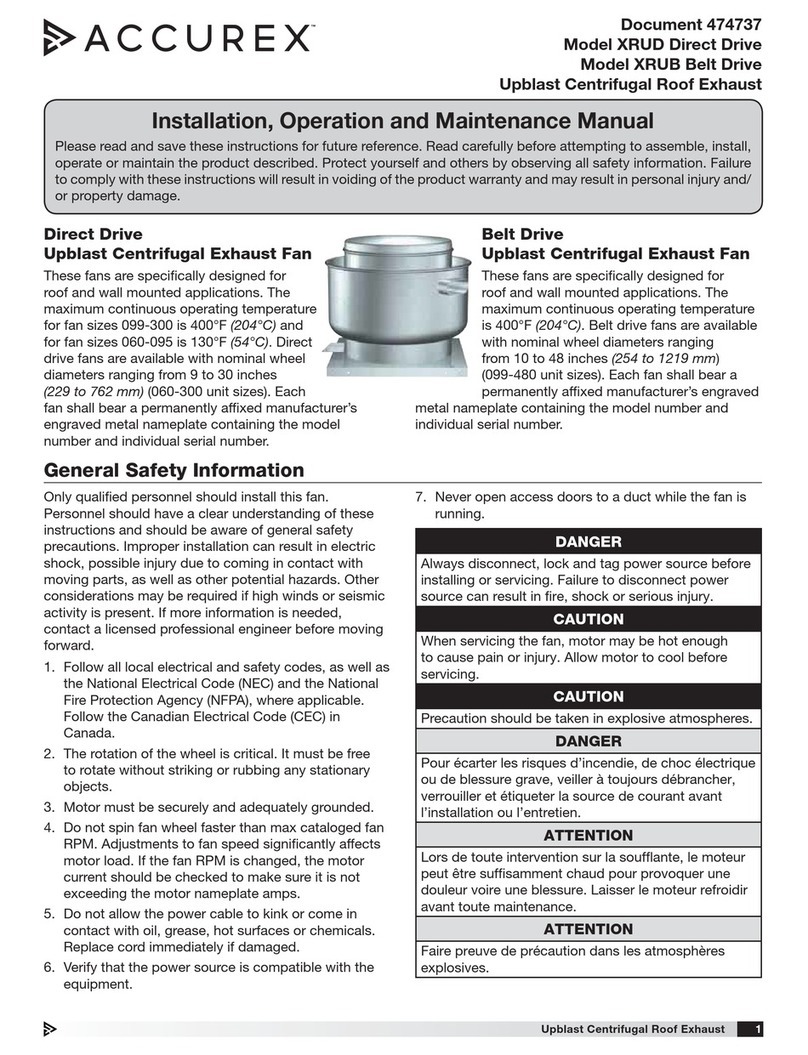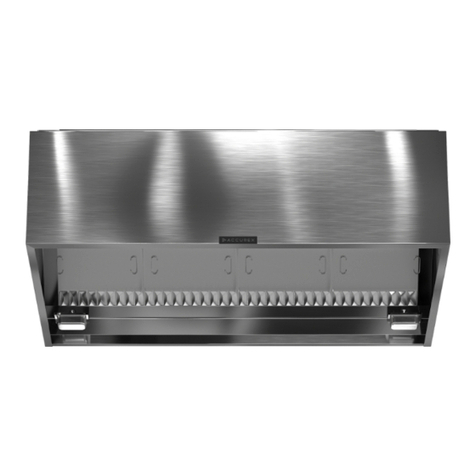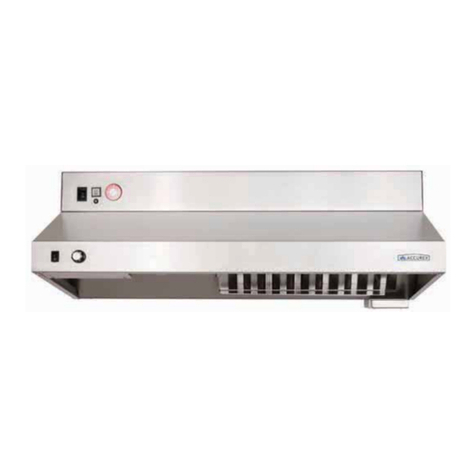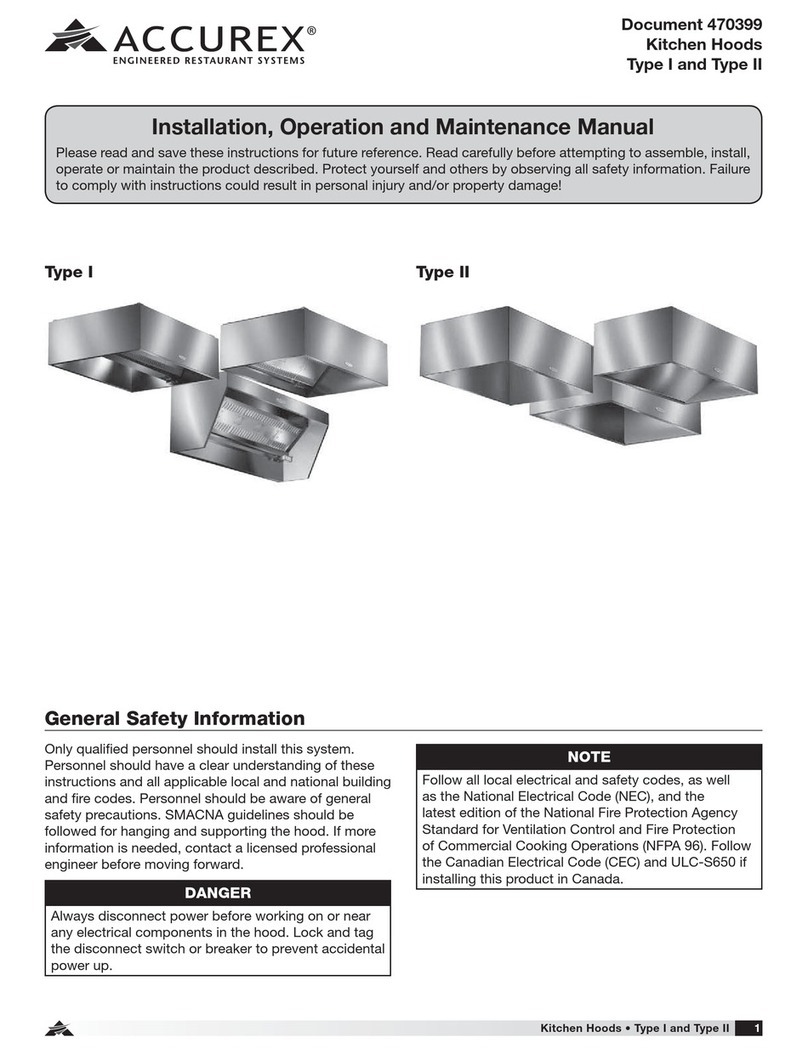
Fire Ready Hood 1
Document 483298
Model XRRS
Fire Ready Hood
Installation, Operation and Maintenance Manual
Please read and save these instructions for future reference. Read carefully before attempting to assemble, install,
operate or maintain the product described. Protect yourself and others by observing all safety information. Failure
to comply with these instructions will result in voiding of the product warranty and may result in personal injury
and/or property damage.
Listed to UL Subject 300A
NOTE
All service and maintenance on the fire suppression system
should be conducted by an authorized fire equipment
distributer. Do not tamper with fire suppression components
if not instructed to do so.
WARNING
To reduce the risk of fire, electric shock, or injury to
persons, observe the following:
•Use this product only in the manner intended by the manufacturer
(to cover domestic ranges used for domestic purposes).
•When cutting or drilling into wall or ceiling, do not damage
electrical wiring or other hidden utilities.
•Ducted exhaust fans must always be vented to the outdoors.
•Use only rigid, metal ductwork
•This unit must be properly grounded.
To reduce the risk of range top grease fire:
•Never leave the range unattended at high settings. Boil-overs
cause smoking and greasy spillovers that may ignite.
•Dense smoke from frying pans indicates cooking oil is near auto
ignition – turn the burner down or off.
•Always turn the hood fan ON when part of the cooking surface is
on
•Always make sure the hood grease filter is installed before cooking.
•Clean hood grease filter frequently. Do not allow grease to
accumulate on filter.
•Always use proper pan size. Use cookware appropriate for the size
of the surface element.
•Keep cooking areas clean and clear of combustible materials.
To reduce the risk of injury to persons in the event of a
range top grease fire, observe the following:*
• SMOTHER FLAMES with a close-fitting lid, cookie sheet, or metal
tray, then turn off the burner. BE CAREFUL TO PREVENT BURNS.
If the flames do not go out immediately, EVACUATE AND CALL
THE FIRE DEPARTMENT.
• NEVER PICK UP A FLAMING PAN. You may be burned.
• DO NOT USE WATER, including wet dishcloths or towels - violent
steam explosion will result.
*Based on “Kitchen Fire Safety Tips” published by NFPA.
General Safety Information
Personnel should have a clear understanding of these
instructions and all applicable, current local and national
building and fire codes before installing this product.
AVERTISSEMENT
Pour réduire le risque d’incendie, de choc électrique ou
de blessure corporelle, respecter ce qui suit :
•Utiliser uniquement ce produit de la façon prévue par le fabricant
(pour couvrir les cuisinières domestiques utilisées à la maison).
•Lors de la découpe ou du perçage de murs ou plafonds, ne pas
endommager les câbles électriques et autres conduites masquées.
•Les caissons d’extraction à gaine d’évacuation doivent toujours
être évacués vers l’extérieur.
•Utiliser uniquement un réseau de gaine rigide, en métal.
•Cet appareil doit être bien raccordé à la terre.
Pour réduire le disque d’incendie de graisse sur le
dessus de la cuisinière :
• Ne jamais laisser la cuisinière sans surveillance à des réglages
élevés. Les débordements causent de la fumée et des
débordements de graisse qui peuvent s’enflammer.
• Une fumée dense provenant de poêles à frire indiquent que l’huile
à friture s’approche de son point d’inflammation spontanée. Régler
le bruleur plus bas ou l’éteindre.
• Toujours activer le ventilateur de la hotte lorsqu’une partie de la
surface de cuisson chauffe.
• Toujours s’assurer que le filtre de graisse de la hotte est installé
avant la cuisson.
• Nettoyer fréquemment la graisse du filtre de la hotte. Ne pas laisser
s’accumuler la graisse sur le filtre.
• Toujours utiliser la taille appropriée de poêle à frire. Utiliser une
batterie de cuisine proportionnelle à la surface de l’élément.
• Garder propre l’aire de cuisson et dégagée de toute matière
combustible.
Observer les points suivants pour réduire le risque
de blessures aux personnes advenant un incendie de
graisse sur le dessus de la cuisinière :*
• ÉTOUFFER LES FLAMMES à l’aide d’un couvercle ajusté,
d’une plaque à biscuits ou d’un plateau en métal, puis fermer le
brûleur. S’ASSURER D’ÉVITER DES BRÛLURES. Si les flammes
ne s’éteignent pas immédiatement, ÉVACUER LES LIEUX ET
APPELER LE SERVICE D’INCENDIE.
• NE JAMAIS SAISIR UNE POÊLE EN FLAMME. Vous pourriez vous
brûler.
• NE PAS UTILISER D’EAU, ni de linges à vaisselle ni de serviettes
mouillées car il pourrait se produire une violente explosion de
vapeur.
*Basé sur les « Kitchen Fire Safety Tips » (Conseils de sécurité sur
les incendies de cuisine) publiés par la NFPA







